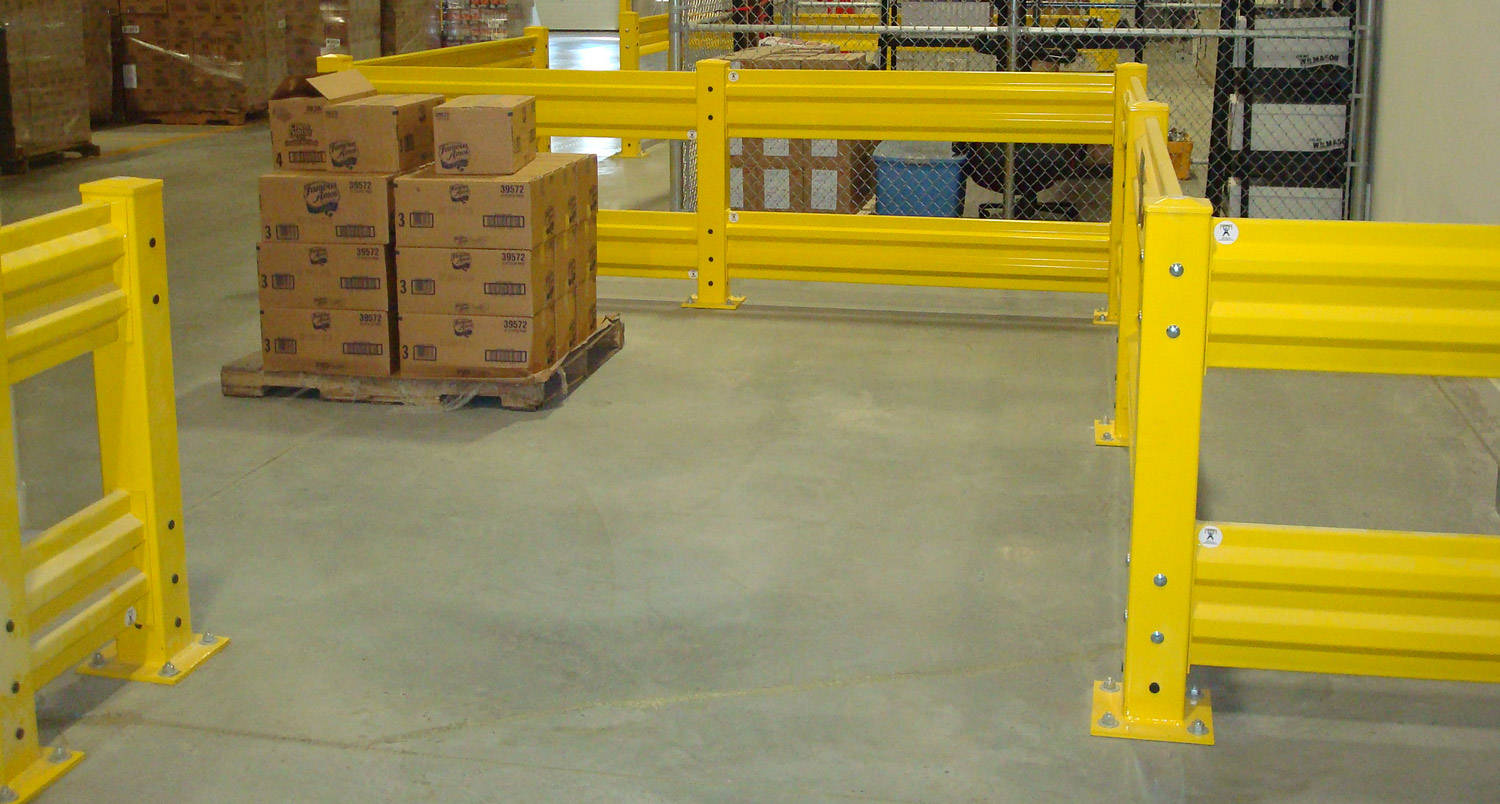Warehouses serve as the hub of logistical operations for countless businesses, housing valuable assets, merchandise, and inventory. With such assets concentrated in one space, ensuring their safety and protection is paramount. One often overlooked yet critical component of warehouse safety is guardrails. Guardrails are not merely physical barriers; they symbolize a commitment to safeguarding assets, employees, and the overall integrity of the warehouse environment. In this blog post, we delve into the importance of warehouse guardrail and how they shield your assets.
Safety First: Protecting Your People
Guardrails serve as a primary defense mechanism against workplace accidents and injuries. In a bustling warehouse environment where heavy machinery, forklifts, and personnel converge, the potential for accidents is ever-present. Guardrails create clearly defined pathways, delineating safe zones from areas prone to risks such as loading docks, mezzanines, and machinery zones.
By installing guardrails strategically throughout the warehouse, businesses mitigate the risk of collisions, falls, and other workplace mishaps. Furthermore, guardrails provide a visual cue, reminding employees to exercise caution and adhere to safety protocols. This proactive approach not only protects employees but also enhances overall productivity by minimizing downtime due to accidents.
Preserving Inventory Integrity
Beyond safeguarding personnel, warehouse guardrails play a pivotal role in preserving inventory integrity. A single collision with a storage rack or shelving unit can result in substantial financial losses and operational disruptions. Guardrails act as a buffer, absorbing the impact of collisions and preventing costly damage to inventory and infrastructure.
Moreover, guardrails provide structural support to storage systems, reinforcing their stability and longevity. By creating a protective barrier around valuable assets, businesses safeguard against the domino effect of warehouse accidents, ensuring business continuity and customer satisfaction.
Compliance and Liability
In an increasingly litigious society, regulatory compliance and liability mitigation are paramount concerns for businesses. Failure to adhere to established safety standards not only exposes businesses to legal repercussions but also jeopardizes their reputation and goodwill. Warehouse guardrails demonstrate a commitment to compliance with occupational health and safety regulations, mitigating the risk of fines, lawsuits, and reputational damage.
By proactively investing in safety measures such as guardrails, businesses signal their dedication to employee well-being and operational excellence. This proactive approach fosters a culture of safety consciousness, empowering employees to take ownership of their workplace environment and actively contribute to its security and integrity.
Choosing the Right Guardrail Solution
Selecting the appropriate guardrail solution entails a comprehensive assessment of warehouse layout, traffic patterns, and operational requirements. Modular guardrail systems offer versatility and scalability, allowing businesses to adapt to evolving safety needs and spatial constraints. Galvanized steel guardrails provide durability and corrosion resistance, ensuring long-term reliability in challenging warehouse environments.
Furthermore, customizable guardrail configurations enable businesses to tailor solutions to their specific requirements, whether protecting high-traffic pedestrian areas or securing hazardous machinery zones. Collaborating with experienced safety consultants and engineers ensures that guardrail installations align with regulatory standards and industry best practices, maximizing their effectiveness in safeguarding assets and personnel.
